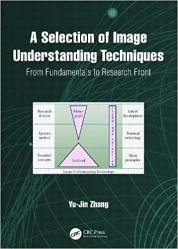 Название: A Selection of Image Understanding Techniques: From Fundamentals to Research Front
Название: A Selection of Image Understanding Techniques: From Fundamentals to Research FrontАвтор: Yu-Jin Zhang
Издательство: CRC Press
Год: 2023
Страниц: 349
Язык: английский
Формат: pdf (true)
Размер: 48.4 MB
This book offers a comprehensive introduction to seven commonly used image understanding techniques in modern information technology. Readers of various levels can find suitable techniques to solve their practical problems and discover the latest development in these specific domains.
The techniques covered include camera model and calibration, stereo vision, generalized matching, scene analysis and semantic interpretation, multi-sensor image information fusion, content-based visual information retrieval, and understanding spatial-temporal behavior. The book provides aspects from the essential concepts overview and basic principles to detailed introduction, explanation of the current methods and their practical techniques. It also presents discussions on the research trends and latest results in conjunction with new development of technical methods.
Image understanding and computer vision are closely related. Image is a physical form of representing visual information, and image understanding must be carried out with the help of computers, and based on image processing and analysis. As a discipline, computer vision has a very close connection and different degrees of intersection with many disciplines that take images as the main research object, especially image processing, image analysis, and image understanding. Computer vision mainly emphasizes the realization of human visual functions with computers, which actually requires the use of many technologies at the three levels of image engineering, although the current research content is mainly combined with image understanding.
The close connection between image understanding and computer vision can also be seen in the definition of computer vision, the central problem of which is to understand the object and/or scene and its properties from a single or multiple monocular, moving or stationary observers. This definition basically matches the definition of image understanding. The complexity of the comprehension task is related to the specific application. If there is less prior knowledge, such as in the human vision of nature, then understanding is complex; but in many cases where the environment and goals are defined and constrained, since the possible explanations are limited, then the understanding can be less complicated.
In building an image/visual information system and using computers to assist humans in completing various visual tasks, both image understanding and computer vision require the use of theories of projective geometry, probability theory and stochastic processes, and Artificial Intelligence (AI). In fact, computer vision was originally studied as an artificial intelligence problem, so it is also called image understanding. In practice, the terms image understanding and computer vision are often used interchangeably.
This is an excellent read for those who do not have a subject background in image technology but need to use these techniques to complete specific tasks. These essential information will also be useful for their further study in the relevant fields.
Скачать A Selection of Image Understanding Techniques: From Fundamentals to Research Front